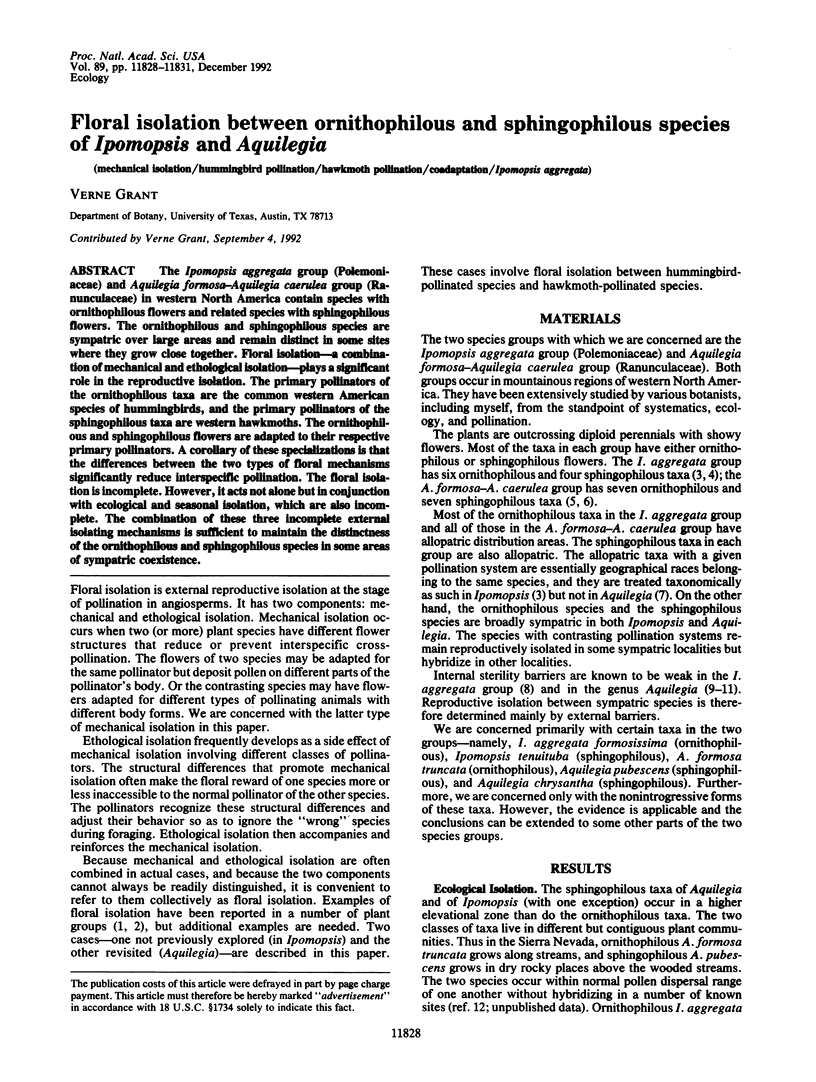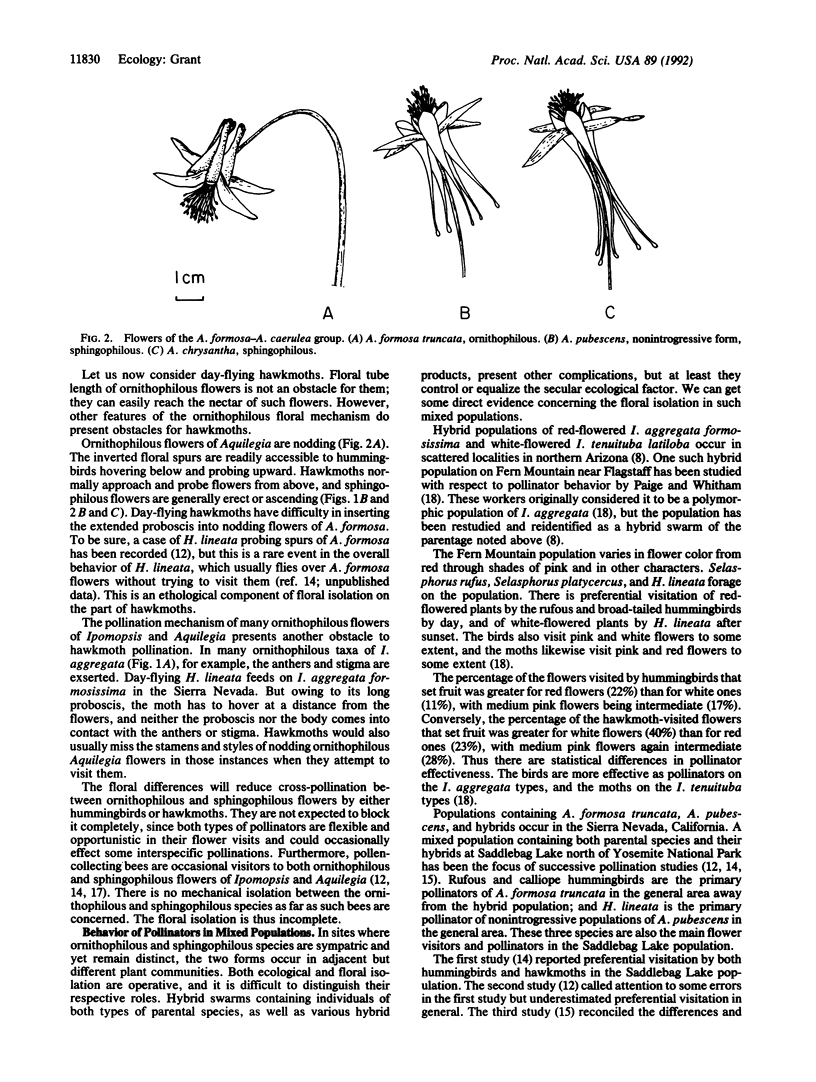Abstract
The Ipomopsis aggregata group (Polemoniaceae) and Aquilegia formosa-Aquilegia caerulea group (Ranunculaceae) in western North America contain species with ornithophilous flowers and related species with sphingophilous flowers. The ornithophilous and sphingophilous species are sympatric over large areas and remain distinct in some sites where they grow close together. Floral isolation-a combination of mechanical and ethological isolation-plays a significant role in the reproductive isolation. The primary pollinators of the ornithophilous taxa are the common western American species of hummingbirds, and the primary pollinators of the sphingophilous taxa are western hawkmoths. The ornithophilous and sphingophilous flowers are adapted to their respective primary pollinators. A corollary of these specializations is that the differences between the two types of floral mechanisms significantly reduce interspecific pollination. The floral isolation is incomplete. However, it acts not alone but in conjunction with ecological and seasonal isolation, which are also incomplete. The combination of these three incomplete external isolating mechanisms is sufficient to maintain the distinctness of the ornithophilous and sphingophilous species in some areas of sympatric coexistence.
Full text
PDF



Selected References
These references are in PubMed. This may not be the complete list of references from this article.
- Grant V., Temeles E. J. Foraging ability of rufous hummingbirds on hummingbird flowers and hawkmoth flowers. Proc Natl Acad Sci U S A. 1992 Oct 15;89(20):9400–9404. doi: 10.1073/pnas.89.20.9400. [DOI] [PMC free article] [PubMed] [Google Scholar]
- Paige K. N., Whitham T. G. Individual and population shifts in flower color by scarlet gilia: a mechanism for pollinator tracking. Science. 1985 Jan 18;227(4684):315–317. doi: 10.1126/science.227.4684.315. [DOI] [PubMed] [Google Scholar]


